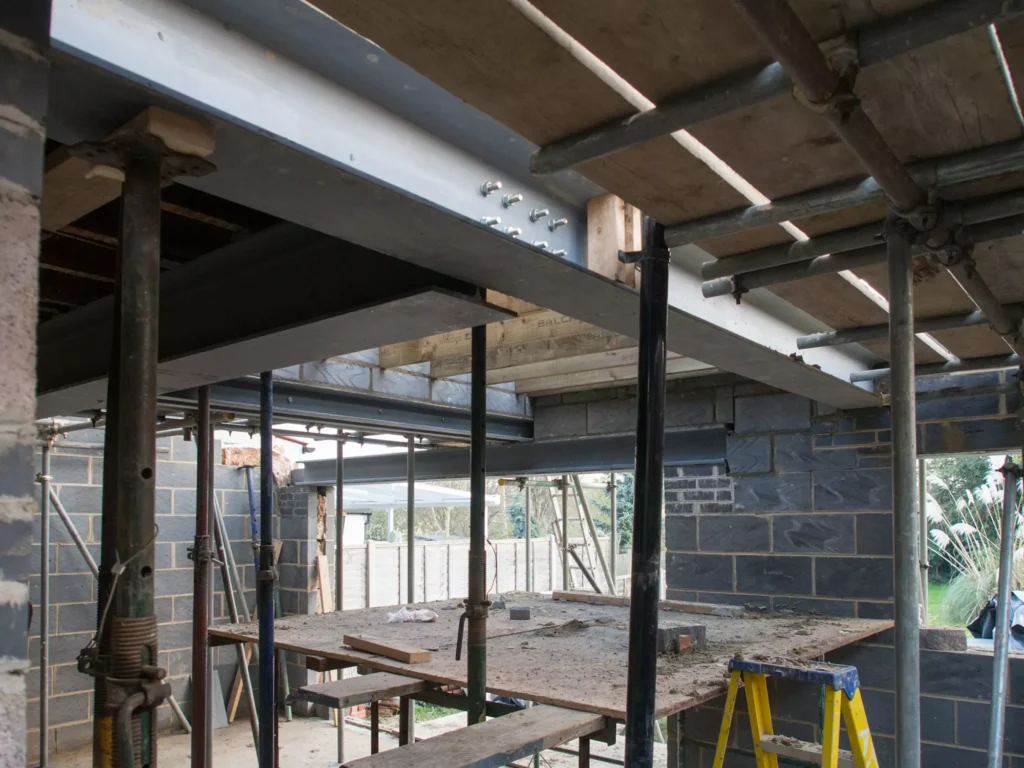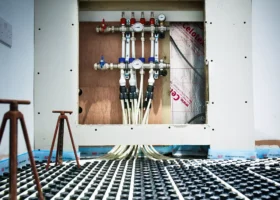
Learn from the experts with our online training course!
Use the code BUILD for 20% off
Learn from the experts with our online training course!
Use the code BUILD for 20% offTaking on a home building project is a major investment in terms of time, energy and – of course – cost. When it comes to delivering best value, the structural design phase is key, as it’s your prime opportunity to control and reduce structural costs.
It might therefore surprise you to learn that, traditionally, one engineering company will provide all this important design work, and it almost never gets reviewed by a second engineer.
Completing a structural design check before you approach builders for quotes can provide significant savings. For instance, on a £50,000 rear extension scheme, Re-structured identified overdesign issues that saved the client 700kg of steel. At £5 per kg, that worked out to a build cost saving of £3,500.
The primary structural elements of a building project include the following:
At Re-Structured, we use cutting-edge algorithms to analyse your existing design, help you cut costs and improve sustainability.
Think of it this way: if the structural cost represents 30% of a £150,000 project, that’s £45,000. Reduce that by 20% and you’re looking at a £9,000 saving (6% of the total project cost).
That’s cash you could redirect into other areas, such as better insulation, high quality windows and more durable flooring.
A structural engineer’s job is to provide a safe design – but there are other factors at play that can lead to overspecification. For instance, a junior staff member might prepare the design, with a senior engineer checking it’s safe. That’s not the same as assessing it for cost efficiency.
High workloads can encourage a fast-and-safe approach, too, such as specifying bigger beams etc. The Grenfell disaster has also increased the cost of professional indemnity insurance, leading engineers to be even more risk averse.

Steelwork is a common area where structural costs can be reduced
The information you and your architect supply can be a factor, too. If there’s insufficient detail about ground conditions or an existing structure, the engineer may make conservative assumptions. Plus, if the scheme has undergone multiple design iterations, this may warp the initial concept.
Complex design can increase nervousness in contractors (“how can I install this big beam?”). They’ll account for uncertainty by increasing tender prices. And remember, building control’s role to check the structure meets the minimum standards, rather than ensuring quality design or identifying overspecification.
The structural engineer’s fees are not the only factor to consider. Aim to find someone who fully understands your project. And, unless there are question marks about structural feasibility, involve the engineer as late as possible, once the design is more fully developed.
Work with them to reduce unknowns. Have trial pits and surveys done in advance, so they’re ready to go, and get CCTV of any existing drainage. This information should provide better certainty for the engineer and thus help to reduce overspecification.
Before they start work on an initial structural design for your project, ask the engineer whether they think there’s anything that could make the build unusual, convoluted or expensive. You’ll save money if issues are spotted early.
Finally, don’t rush your engineer – this can make them design conservatively and include larger or more structure than required, rather than focusing on creating an efficient result.
A structural design check identifies areas to reduce costs. It can have a positive impact on environmental outcome, too, as it often minimises the need for carbon-intensive materials like steel and concrete.
Technology is now available to help you gain confidence that savings can be made. Our algorithms review: design assumptions; foundation choice against the site geology; steelwork sizes against our database of past projects to identify unusual specifications; and the sequencing of the build.
If the design can be significantly optimised, we’ll then put you in touch with a specialist partner engineer to discuss your options. It’s surprisingly easy to find savings of £1,000s on structural costs, even on simple projects.
At the other end of the scale, our assessment of a £5m London refurb cut steelwork by 45% and structural timber by 48%. We were also able to change the drainage design and omit large sections of underpinning – saving £100,000+ in the process.
| James Nevin is an award-winning structural engineer with over 15 years’ experience. He specialises in structural alterations for existing buildings and has worked on thousands of projects, ensuring optimal designs are created.
He is co-founder of Re-Structured, managing partner at Blue Engineering and a Tutor at The Bartlett School of Architecture, UCL. |
Top image: iStock.com/Franck-Boston

